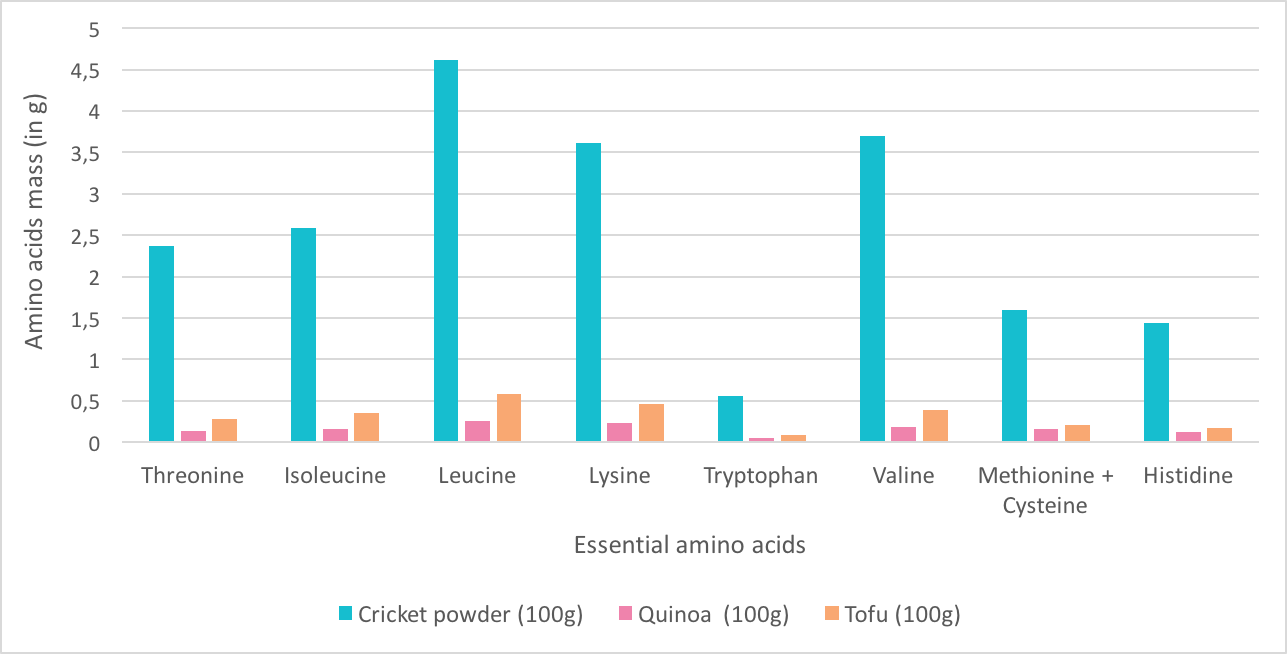Have you ever wondered what the difference is between animal and plant protein? Do you have any idea how plant protein found in various products are extracted? Do you really know what the terms "soy isolate" or "rice protein" mean? Do you know the advantages of insect protein over plant protein? If you answered "no" to some of these questions, then this article is for you!
Plant protein
Both plant and animal protein are made from a combination of amino acids. As previously mentioned in the article about protein, protein is considered as "complete" when it possesses an adequate quantity all 9 of the essential amino acids. These essential amino acids are very important for the proper functioning of the metabolism, particularly in the context of a sport diet for ultra-endurance athletes. While animal protein is always complete, it is not the case for all plant protein.
Vegetables and cereal protein
Most of the legumes and cereals are sources of incomplete protein: some of the essential amino acids are not present in adequate quantities.
Legumes, such as lentils, tend to have a relatively low concentration in 2 essential amino acids. Cereals, on the other hand, usually only have 8 of the 9 essential amino acids in adequate amount. In fact, they are often poor in lysine, but rich in methionine and cysteine; the two essential amino acids frequently lacking vegetables. Thus, a diet mixing cereals and vegetables throughout the day is often recommended for vegetarians to obtain all essential amino acids in sufficient quantities.
Complete plant proteins
Nevertheless, some plant protein are complete, such as the protein found in soya, quinoa, chia seeds, and flax seeds. For the purpose of this article, we will focus on tofu (made from soya), and quinoa, as they are considered excellent sources of complete plant protein in our diet.

Tofu and quinoa protein
Tofu, made from unfermented soy curd, is one of the most important products derived from soy protein. Different types of tofu can be found, with variations in texture and taste based on the manufacturing method.
Quinoa, on the other hand, is a pseudo-cerealnative of South America which grew in popularity during the last few years.The term “pseudo-cereal” means that it looks like a cereal, but it is in fact a seed that does not belong to the grass family and thus does not contain gluten (gluten is a mixture of protein found in grains from the grass family that give wheat dough its elastic texture).
Tofu and quinoa VS cricket powder protein
Let's now compare cricket powder protein with the protein found in the two plant-based food products mentioned above; tofu and quinoa. These are three different sources of complete protein. However, cricket powder has a much higher protein content(60%) than the tofu and quinoa (approximately 5%).
Thus, cricket powder possesses approximately 10 times more protein than tofu and quinoa, on the same weight basis. It is very interesting from a nutritional point of view for ultra endurance athletes.
Cricket powder is therefore considerably superior in terms of supply of essential amino acids, as can be seen in the graph below.

Graph 1: Essential amino acid content comparison between 100g of cricket powder, 100g of quinoa, and 100g of tofu
Plant protein isolates
By-products of plant protein are widely used to improve nutritional values of certain foods, such as energy bars. Isolates or concentrates made of soy, hemp or rice protein are popular in the food industry to increase protein content of products. If at first glance a food product seems “natural” because it only contains plant proteins; it is important to note that a transformation process is necessary in order to isolate and extract the protein from its source.
For example, to obtain soy protein isolate, it is necessary to separate the protein from the other components also contained in the bean. For this purpose, the oil is first extracted by crushing soybeans through rollers along with a food-grade solvent, forming flakes.The latter are then conveyed through a system of heating to remove the solvent from the materials. Finally,the defatted flakes obtained can be milled into flour or further processed to create soy protein concentrate or isolate following the process below:


The final product is a powder containing on average 90% of protein and widely used in the food industry.
Thus, although the protein is from a natural origin, it undergoes a transformation process to be concentrated before being added to food products. When we start speaking about transformation, the notion of natural become rather abstract.
Crickets, on the other hand, naturally possess a high protein contentand can thus be directly added to various food products to increase their protein content. They do not need to undergo various complex transformations as one can observe on the graph below:

And what about Näak bars ?
Most of the protein found in Näak bars comes from a complete, natural and eco-friendly source: crickets (see the article). Näak is the first sport nutrition made to fulfill the energy needs of ultra trail runners with the most sustainable approach. So, why not give insect protein a try with a Näak bar?




































Laisser un commentaire